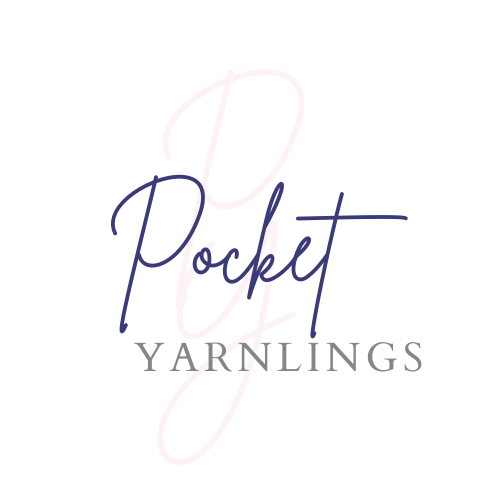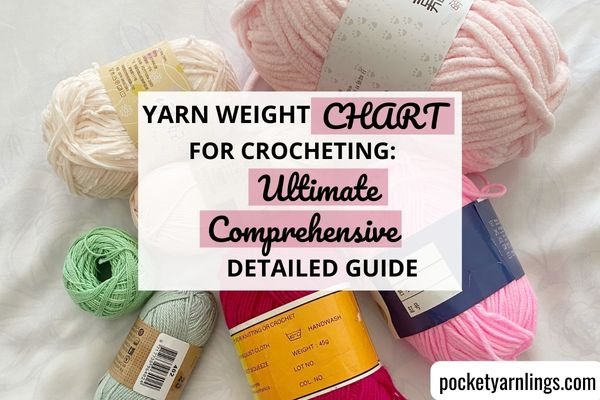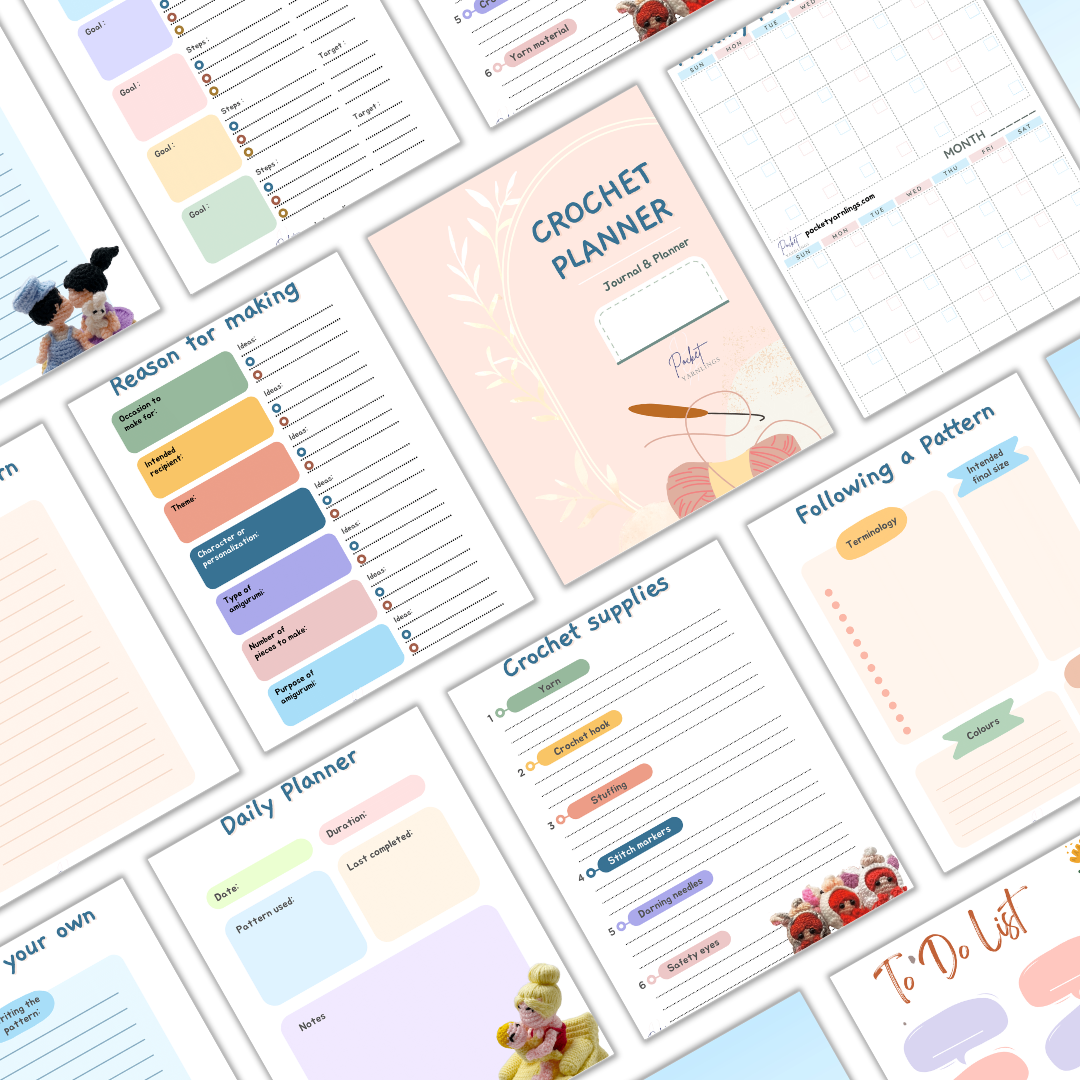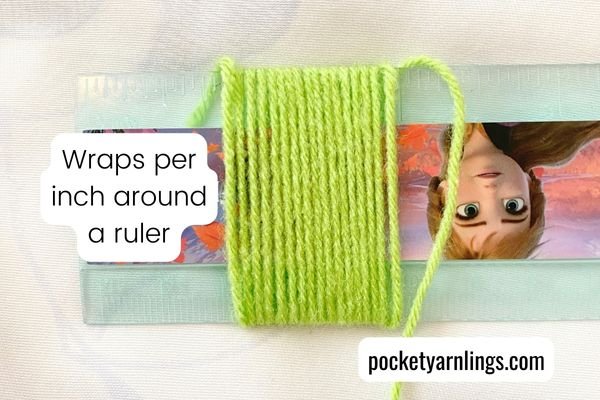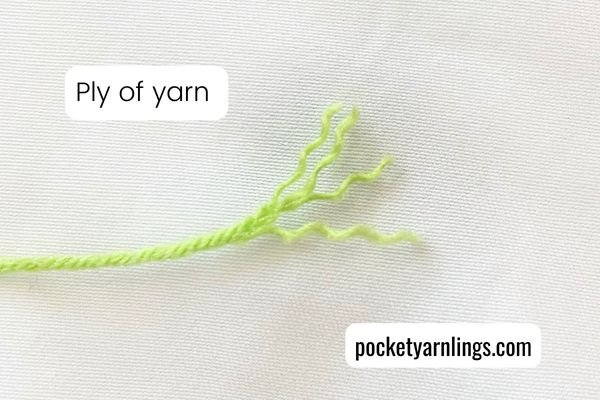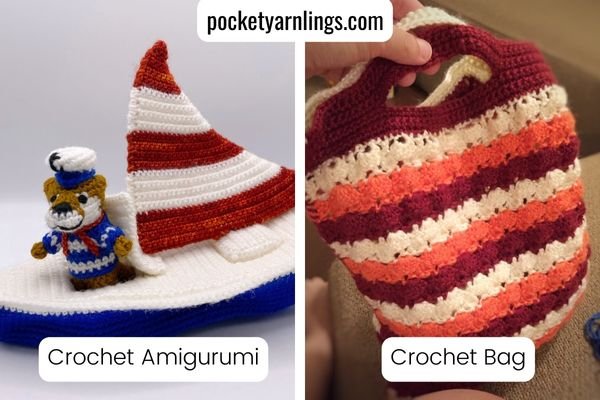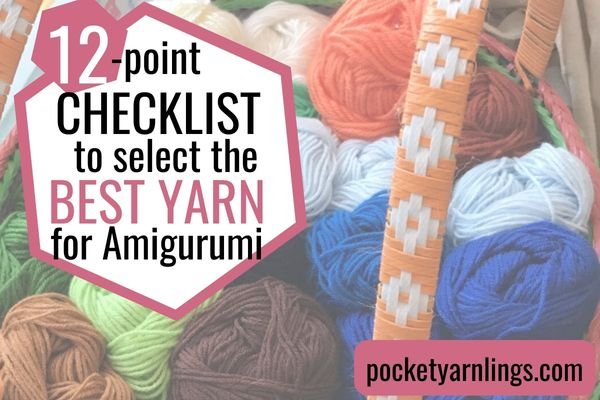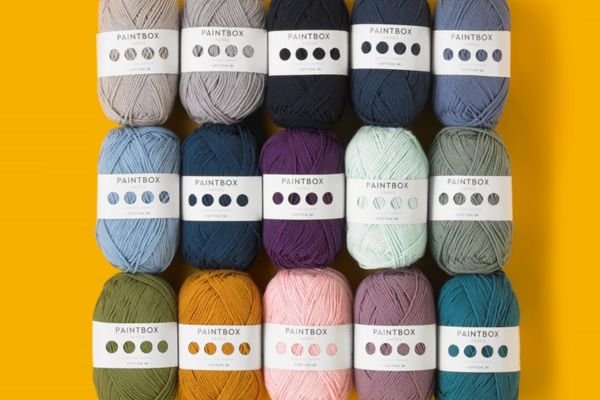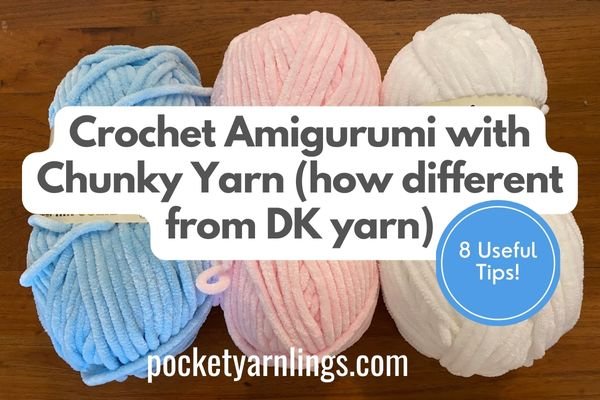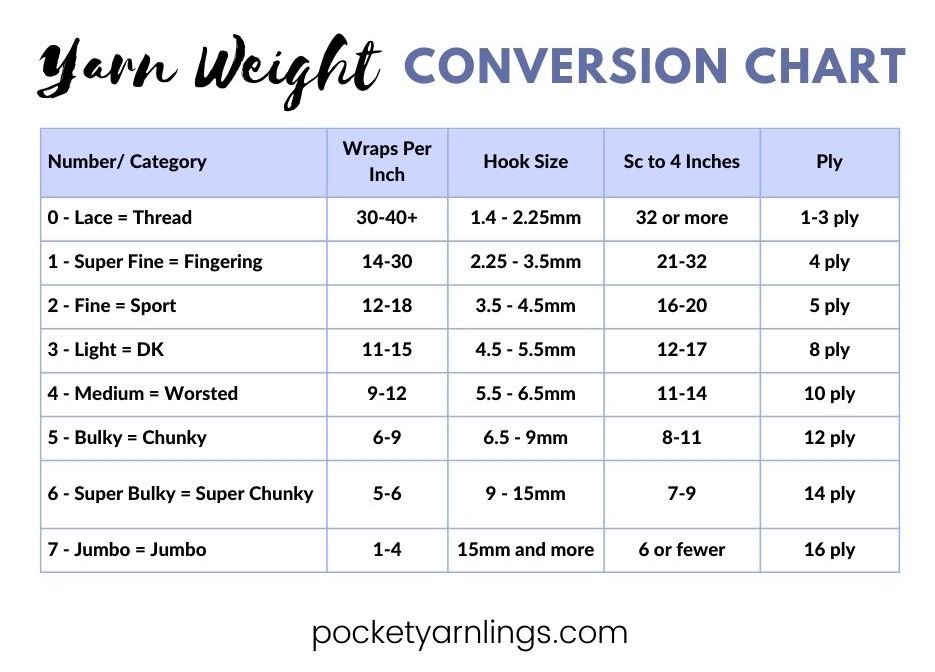Yarn Weight Chart for Crocheting: Ultimate Comprehensive Detailed Guide
Yarn weight is an important factor to consider when starting a crochet project. The weight of the yarn determines its thickness, which can affect the final product's size and texture. There are seven standard yarn weights, ranging from super fine to jumbo, each with its own recommended hook size.
Understanding the different yarn weights can help crocheters select the best yarn for their project and achieve the desired results. For me, I tried experimenting with all sorts, usually sport yarn for amigurumis, but lately chunky and lace yarn as well!
*This blog post may contain affiliate links. When you make a purchase through my link, I may receive a small commission at no additional cost to you.*
Table of Contents Show
What is the weight of a yarn?
Yarn weight refers to the thickness of a yarn strand. It is one of the most important factors to consider when choosing a yarn for a crochet project. Yarn weight is categorized by a number system ranging from 0 to 7, with 0 being the thinnest and 7 being the thickest.
The weight of the yarn is determined by the thickness of the strand, which is measured in wraps per inch (WPI). The higher the WPI, the finer the yarn, and the lower the WPI, the thicker the yarn. I will elaborate more on this later.
There are different categories of yarn by weight (explored just after this), ranging from lace weight (the finest) to super bulky weight (the thickest). Each category has a recommended needle size and gauge range, which helps determine the appropriate use for the yarn.
What are the categories of yarn weight?
There are several categories of yarn weight that can be used for crocheting, each with its own unique characteristics. Here are the most common categories of yarn weight:
Lace Weight
Lace weight yarn is the lightest of all yarn weights and is typically used for delicate and intricate projects such as shawls, doilies, and lace garments. It is usually made from fine fibers such as silk, alpaca, cashmere, or merino wool. Lace weight yarn is often used in combination with larger yarns to create interesting textures.
Fingering Weight
Fingering weight yarn is also known as sock yarn and is slightly heavier than lace weight yarn. It is commonly used for lightweight garments such as socks, shawls, and other accessories. Fingering weight yarn is often made from wool, cotton, or a blend of both. I love using this type weight for creating small hand-held amigurumi.
Sport Weight
Sport weight yarn is a medium weight yarn that is commonly used for lightweight garments such as sweaters, baby clothes, and blankets. It is slightly heavier than fingering weight yarn and is often made from wool, cotton, or a blend of both. Another common choice for amigurumi crocheters to use for making amigurumi projects as well.
DK Weight
DK yarn is valued for its ability to create lightweight and breathable fabrics, making it an excellent choice for garments and accessories. It is often used to craft sweaters, cardigans, shawls, hats, scarves, and baby items. This is often one of the first choices of yarn weight to go to for first time amigurumi crocheters because of the wide range of colours and easy yarn handling.
Worsted Weight
Worsted weight yarn is one of the most popular yarn weights and is commonly used for a variety of projects such as scarves, hats, and blankets. It is a medium weight yarn that is often made from wool, acrylic, or a blend of both. Some crocheters choose worsted weight yarn to create larger amigurumi pieces.
Bulky Weight
Bulky weight yarn is a thick and heavy yarn that is commonly used for warm and cozy projects such as blankets, scarves, and hats. It is often made from wool, alpaca, or a blend of both. This might be an unusual yarn to use for making amigurumi but many crocheters love using it to make chunky plushies!
Super Bulky Weight
Super bulky weight yarn is the heaviest of all yarn weights and is commonly used for quick and easy projects such as blankets, scarves, and hats. It is often made from wool, acrylic, or a blend of both.
Overall, the weight of the yarn you choose will depend on the project you are working on and the desired outcome. It is important to choose the right weight of yarn to ensure that your project turns out as intended.
If you find this article useful so far, remember to pin this to Pinterest so that others might find it useful too!
What are the different types of yarn by number?
0 - Lace = Thread
1 - Super Fine = Fingering
2 - Fine = Sport
3 - Light = DK
4 - Medium = Worsted
5 - Bulky = Chunky
6 - Super Bulky = Super Chunky
7 - Jumbo = Jumbo
The next few questions are to help interpret the numbering classification above.
What is 3 or 4 weight yarn?
3 or 4 weight yarn typically refers to the yarn in the DK (Double Knitting) weight category. DK weight yarn falls between the lighter weight yarns like lace, fingering, and sport, and the heavier weight yarns like worsted and Aran. The number 3 or 4 indicates its placement within the weight category range.
What does 5 weight yarn mean?
5 weight yarn refers to yarn in the worsted weight category. Worsted weight yarn is considered a medium weight yarn, falling between the lighter weight yarns such as lace, fingering, sport, and DK, and the heavier weight yarns such as Aran, bulky, and super bulky.
What is weight 7 yarn?
Weight 7 yarn refers to yarn in the super bulky weight category. Super bulky yarn is known for its thickness and the ability to create projects quickly due to its large size. It is one of the heaviest weight categories and is ideal for projects that require a chunky and cozy appearance. It is often chosen for projects where warmth and quick results are desired.
Free Crochet Planner Journal!
Click here to grab this 20-paged workbook and checklists that will help organize your creativity before you even start on your next crochet project! Or click on image on the left.
Why is Yarn by Weight Important?
Understanding yarn by weight is important for several reasons. Firstly, it helps you choose the right yarn for your project. If you want to knit or crochet a delicate lace shawl, you would choose a lace weight yarn. If you want to make a cozy blanket, you would choose a bulky or super bulky weight yarn.
Secondly, yarn by weight helps you achieve the correct gauge for your project. Gauge refers to the number of stitches and rows per inch, and it is important for ensuring that your finished project is the correct size and shape. Using the recommended needle size and gauge range for your chosen yarn by weight can help you achieve the correct gauge. Although to be completely honest, I am not fantastic at keeping to a gauge for amigurumi.
Finally, understanding yarn by weight can help you substitute yarns in a pattern. If you cannot find the exact yarn called for in a pattern, you can use a yarn in the same weight category to achieve a similar result.
How do you know what weight yarn is?
Yarn weight is typically indicated on the yarn label, which is generally the easiest and most reliable way to determine the weight of the yarn. Just look for the category of the weight listed on the label or for a specific number (anywhere between 0-7).
However, if you are looking at a bunch of unlabelled leftover yarn, you can also determine the weight of the yarn observing the thickness and texture of the yarn. That is where using wraps per inch (WPI) to determine what your yarn weight is might be helpful. This will be explored further on below.
How do you read yarn size?
Reading yarn size involves understanding the information provided on the yarn label or packaging. Here are some key elements to consider when reading yarn size:
Yarn Weight Category
Yarn weight categories are typically indicated on the label using standardized symbols or numbers. Common weight categories include lace, fingering, sport, DK, worsted, Aran, bulky, super bulky, and jumbo. The label may also mention the corresponding numerical range or ply count associated with the weight category.
Recommended Hook or Needle Size
The label will often provide a recommended hook or needle size to use with the yarn. This information helps you determine the appropriate tools for your project and achieve the desired gauge.
Gauge Information
Gauge refers to the number of stitches and rows per inch or a standardized measurement. The label may provide gauge information for a specific stitch pattern. Paying attention to gauge helps ensure your finished project matches the intended size and appearance – sometimes crocheters following a pattern end up with a much smaller amigurumi because the gauge is different!
Yarn Length
The label usually includes the total length of yarn in yards or meters. This information helps you estimate how much yarn you will need for your project and plan accordingly. Usually for my patterns, I will state how many balls or skeins of yarn are needed.
Fiber Content
The yarn label specifies the composition of the yarn, indicating the types of fibers used, such as wool, cotton, acrylic, alpaca, etc. Understanding the fiber content is essential for choosing the right yarn for your project based on factors like softness, warmth, and care requirements.
Care Instructions
Yarn labels provide care instructions for washing and maintaining the yarn and finished item. It's crucial to follow these instructions to ensure your project remains in good condition.
How do you measure wraps per inch in yarn?
Determining the weight of yarn using the wraps per inch (WPI) method is a useful technique when you don't have the yarn label or you want to verify the weight of yarn in your stash. Here's how you can use WPI to determine yarn weight (please ignore Anna I used my daughter’s ruler lol):
Prepare a ruler or a WPI tool: You'll need a ruler or a WPI tool specifically designed for this purpose. A ruler with a clear inch/cm marking works fine, or you can create your own WPI tool by marking one inch (or another known length) on a piece of cardboard.
Create a yarn sample: Take a small length of yarn (around 4-5 inches) from the skein or ball you want to measure. Ensure it is untwisted and relaxed.
Wrap the yarn around the ruler: Starting at one end of the ruler or WPI tool, wrap the yarn snugly around the ruler without overlapping the strands. Count the number of wraps (or complete revolutions) that fit within one inch.
Measure the WPI: Once you have counted the wraps, determine the average wraps per inch by dividing the total number of wraps by the length of the sample (usually one inch). For example, if you counted 10 wraps in one inch, the WPI would be 10.
Refer to a yarn weight chart: Compare the WPI measurement to a yarn weight chart to determine the corresponding yarn weight category (more on this later below). Different sources may have slight variations, but generally, you can find charts that provide WPI ranges for each weight category.
Consider other factors: Keep in mind that while WPI can give you a general idea of yarn weight, it's essential to consider other characteristics, such as the fiber content, texture, and recommended hook or needle size, to choose the appropriate yarn for your project.
Remember that WPI is just one method to estimate yarn weight, and it may not be 100% accurate. If you're uncertain, it's best to consult the yarn label or consult the manufacturer's website for more precise information about the yarn weight.
Wraps Per Inch (WPI) by yarn weight
Wraps Per Inch
0 - Lace = Thread 30-40+
1 - Super Fine = Fingering 14-30
2 - Fine = Sport 12-18
3 - Light = DK 11-15
4 - Medium = Worsted 9-12
5 - Bulky = Chunky 6-9
6 - Super Bulky = Super Chunky 5-6
7 - Jumbo = Jumbo 1-4
(This chart was taken from Craft Yarn Council.)
What is yardage yarn?
Yardage is also known as yard count or length, and refers to the total length of yarn in yards or meters that is present in a skein or ball. It indicates how much yarn is available for your project.
Yardage is important for estimating how much yarn you will need for a particular project and for calculating yardage requirements when substituting yarn for a pattern. It helps ensure that you have enough yarn to complete your project without running out.
So, this is the part where I get confused a lot so I tried to figure out an easy way to simplify it. Yarn can be measured in terms of weight and length. The measurements for actual physical weight of the yarn are either in grams or in ounces. As for the measurements for the length of yarn, it can be in metres or yards (hence yardage mentioned above).
Having mentioned about length here, the next part is about weight of yarn.
What does 100g yarn mean?
When a yarn is labelled as "100g," it refers to the actual physical weight or mass of the yarn. The "100g" indicates that the yarn skein or ball weighs 100 grams. The weight of the yarn is commonly measured in grams (g) or ounces (oz). Remember this is totally not the same as yarn weight, which has been mentioned extensively above.
The next important thing to note is the weight per unit length, which can vary depending on the fiber content and thickness of the yarn. The weight per unit length is often provided on yarn labels and is expressed in grams per meter (g/m) or ounces per yard (oz/yd). For example, a yarn label might indicate that 50 grams of yarn corresponds to 125 meters in length.
This metric will help you with:
Estimation of yardage: You can calculate the yardage or meterage (or length) of your leftover yarn available for your next project.
Substituting yarn: When substituting yarn for a pattern, knowing the weight of the yarn can help you find a suitable alternative that has a similar weight.
Calculating Yarn Requirements: Some patterns provide yarn requirements based on weight rather than yardage. In these cases, knowing the weight per unit length of the yarn allows you to determine how much yarn you need for the project.
For the next part, let us calculate the yarn length from the weight.
How many meters is 100g of yarn?
We briefly talked about yardage (or meterage) first and then talked about the physical weight of a skein of yarn, which was the example of 100g. So, for this short section, let us talk about how to calculate yarn length from weight.
Let us give an example of this Catona Scheepjes yarn label:
25G = 62.5M <------- this is provided on the yarn label as the weight per unit length
This refers to in one skein of yarn weighing 25g, there is 62.5 metres of yarn.
1G = 62.5/25 = 2.5M <-------- here I am calculating length per unit weight
If you happen to weigh your leftover yarn or the specific pattern calls for a certain yarn weight, say for instance 150g:
150G = 2.5 x 150 = 375M
Which means you have 375m leftover yarn or the pattern requires 375m of yarn to make. I hope this makes sense! There was this very useful article to check out below to learn more about calculations!
Is yarn weight the same as ply?
Ply refers to the number of individual strands or plies that are twisted together to make the yarn. It indicates the construction of the yarn and how many individual threads are combined. For example, a single-ply yarn consists of a single strand, while a 2-ply yarn is made by twisting two strands together. Yarns can have different ply numbers, such as 2-ply, 3-ply, 4-ply, and so on.
While the ply of a yarn can sometimes be an indicator of its thickness, it's not directly equivalent to the yarn weight. Ply mainly relates to the construction of the yarn, while yarn weight refers to the thickness or gauge. It's possible to have yarns with the same weight but different ply numbers, and vice versa.
It's important to consider both the yarn weight and ply when selecting yarn for a project, as they can affect the final appearance and characteristics of the crocheted item.
What weight is 4 ply yarn?
As mentioned above, the yarn weight does not correlate with the ply but there is a strong association. 4 ply yarn could refer to fingering weight yarn which is lightweight and thin (in the US), or in some other parts of the world, it could also refer to sport weight yarn, which is slightly heavier.
I know this can really be confusing! The best way to ensure accuracy is to refer to the yarn label or manufacturer's information, which should provide details about the recommended needle or hook size, gauge, and suggested uses for that yarn.
As a general reference, I have included some common approximation of yarn weight to their corresponding ply but like I did say above, there is some variability in this correlation, especially in different countries.
Based on Craft Yarn Council classification, here is a estimated breakdown of the different yarn weights:
0 - Lace = thread (~1,2,3-ply)
1 - Super Fine = fingering (~4-ply)
2 - Fine = sport (~5-ply)
3 - Light = DK (~8-ply)
4 - Medium = worsted (~10-ply)
5 - Bulky = chunky (~12-ply)
6 - Super Bulky = super chunky (~14-ply)
7 - Jumbo = jumbo (~16-ply)
What size crochet hook to use with what yarn?
When selecting a crochet hook size for a specific yarn, it's essential to consider the yarn weight, desired fabric texture, and the pattern or project you are working on, because making a beanie is different from amigurumi! While there are recommended hook sizes for each yarn weight, it's important to remember that personal tension and gauge can vary. Here's a general guideline for crochet hook sizes based on yarn weights:
Recommended Hook Size
0 - Lace = Thread 1.4 - 2.25mm
1 - Super Fine = Fingering 2.25 - 3.5mm
2 - Fine = Sport 3.5 - 4.5mm
3 - Light = DK 4.5 - 5.5mm
4 - Medium = Worsted 5.5 - 6.5mm
5 - Bulky = Chunky 6.5 - 9mm
6 - Super Bulky = Super Chunky 9 - 15mm
7 - Jumbo = Jumbo 15mm and larger
Also, if you are wondering about which is the most suitable crochet hook to use for crochet or amigurumi, do check out this article on ‘Best Crochet Hook for Amigurumi and 12 ways for Choice Selection’.
What ply is 3mm yarn?
The ply of a yarn is not directly determined by the needle or hook size, such as 3mm, as the ply refers to the number of individual strands twisted together to create the yarn.
The needle or hook size is related to the thickness or gauge of the yarn and is typically associated with a specific yarn weight category. However, it's important to note that the relationship between needle or hook size and yarn weight can vary based on factors such as the fiber content, yarn construction, and personal tension.
For example, a 3mm needle or hook size is commonly associated with a DK (double knitting) weight yarn, which is typically in the medium weight category. However, the ply of the DK weight yarn can vary. It can be a single-ply yarn, a 2-ply yarn, or even a plied yarn with more strands twisted together.
Remember that the ply and the needle/hook size are distinct characteristics of yarn, and understanding both can help you choose the appropriate yarn for your project.
What size yarn is good for crochet?
To choose the right yarn by weight in general, consider the following factors below:
Consider the Project
When choosing the right yarn by weight, the first thing to consider is the project you will be working on. Different yarn weights are suitable for different types of projects. For example, if you are making a sweater, you will need a heavier weight yarn, while a scarf or shawl can be made with a lighter weight yarn.
Consider the Pattern
The pattern you will be using is also an important factor to consider when choosing the right yarn by weight. The pattern will usually specify what weight of yarn is needed to achieve the desired outcome. It is important to follow the pattern's recommendations to ensure that the finished project will look as intended, although it might be fun to change things up once in a while.
Consider the Yarn Material
The material of the yarn is another factor to consider when choosing the right yarn by weight. Different materials have different properties, such as drape, elasticity, and warmth. For example, wool is a popular material for sweaters because it is warm and has good elasticity, while cotton is often used for summer garments because it is lightweight and breathable.
Consider the Gauge
The gauge of the yarn is also important to consider when choosing the right yarn by weight. It is important to choose a yarn that will meet the gauge requirements of the pattern to ensure that the finished project will be the correct size.
What weight yarn should beginners crochet with?
For beginners in crochet, it is generally recommended to start with medium weight yarn, also known as worsted weight or Aran weight yarn. A few simple reasons would be easier handling, versatility, accessibility, clean stitch definition and forgiving tension.
This weight of yarn is relatively easier to work with as it is not too thin or thick. Also, because it has clearer stitch definition, it makes it easy to identify where to insert the crochet hook. It can be used to make a wide variety of crochet projects including scarves, hats, blankets, garments and even amigurumi. It is also readily available in many different colours and brands. Lastly, it can accommodate slight variations in tension without affecting the overall appearance of the project.
Of course, the choice of yarn ultimately depends on personal preference. Some beginners may feel more comfortable starting with a different yarn weight based on their interests and project goals. The most important thing is to choose a yarn that you enjoy working with and feel motivated to practice and learn with.
What yarn should I use for amigurumi?
To be honest, this answer could be very similar to the previous one which is to use medium weight yarn or worsted weight because of all the reasons I mentioned above. However, many amigurumi crocheters do pick starting off with DK yarn which is likewise not as thin as lace or fingering yarn and not as thick as chunky yarn.
There are so many factors that go into considering the right yarn for your amigurumi, including what is the purpose, who you are gifting it to, what is your skill level, whether to use natural or synthetic fibres, the yarn weight, choice of colours, accessibility, cost, washability and more. In fact, I have this 12-point checklist on how to select the best yarn for amigurumi, which you are read about over here.
But in summary, using DK yarn is a great place to start with making amigurumi because they are great for quick easy beginner amigurumi projects, there are often many different colours available, clear stitch definition and forgiving tension as well. Another big consideration is to get a pack of smaller skeins of DK yarn with multiple colours so that you can incorporate them into your amigurumi project! Click on the image below to see more about DK yarn.
Also, if you never considered using chunky yarn for amigurumi (probably not as a beginner), then here are some ways you can try it out, how it is different from using DK yarn and useful tips on how to handle that tricky thick yarn for making amigurumi plushies! Here is more on ‘Crochet Amigurumi with Chunky Yarn (how different from DK yarn) - 8 Useful Tips!’.
Yarn Weight Conversion Chart
When it comes to crocheting, understanding yarn weight is essential. Yarn weight is determined by its thickness, which is measured in terms of wraps per inch (WPI). The thickness of the yarn affects the final product's look, feel, and drape. It also determines the size of the needles or hooks used to work with the yarn.
To help crocheters make the right choice, a yarn weight conversion chart is a useful tool. The chart lists the different yarn weights, their thickness, recommended hook size for each weight and an estimated ply.
Here is a simple yarn weight conversion chart, which summarizes everything mentioned above:
Free Crochet Planner Journal!
Click here to grab this 20-paged workbook and checklists that will help organize your creativity before you even start on your next crochet project! Or click on image on the left.
Conclusion of Yarn Weight Chart for Crocheting
In conclusion, understanding yarn weight charts is essential for crocheters who want to create beautiful and functional projects. By choosing the right yarn weight for your project, you can ensure that your finished product will look and feel the way you want it to.
Remember that the weight of your yarn will affect the finished size and texture of your project, so it's important to pay attention to the weight recommendations in your pattern. Using the wrong weight can result in a project that is too small, too large, or too heavy.
Finally, don't be afraid to experiment with different yarn weights and fibers to find what works best for you. With practice and experience, you'll develop a sense for what yarns will work well for different projects and be able to create beautiful and unique crocheted items.
Related Resources
12-point Checklist to Select the Best Yarn for Amigurumi
Crochet Hook Size Chart for Amigurumi: Absolutely Everything You Need to Know
Fingering Weight Yarn for Crocheting – Comprehensive Guide and Where to Buy
Sport Weight Yarn for Crocheting– Comprehensive Guide and Where to Buy
DK Weight Yarn for Crocheting – Comprehensive Guide and Where to Buy
Worsted Weight Yarn for Crocheting – Comprehensive Guide and Where to Buy
Chunky Weight Yarn for Crocheting – Comprehensive Guide and Where to Buy
Learn to Crochet Online - Beginner Crochet Classes and Advanced Amigurumi Design Courses

